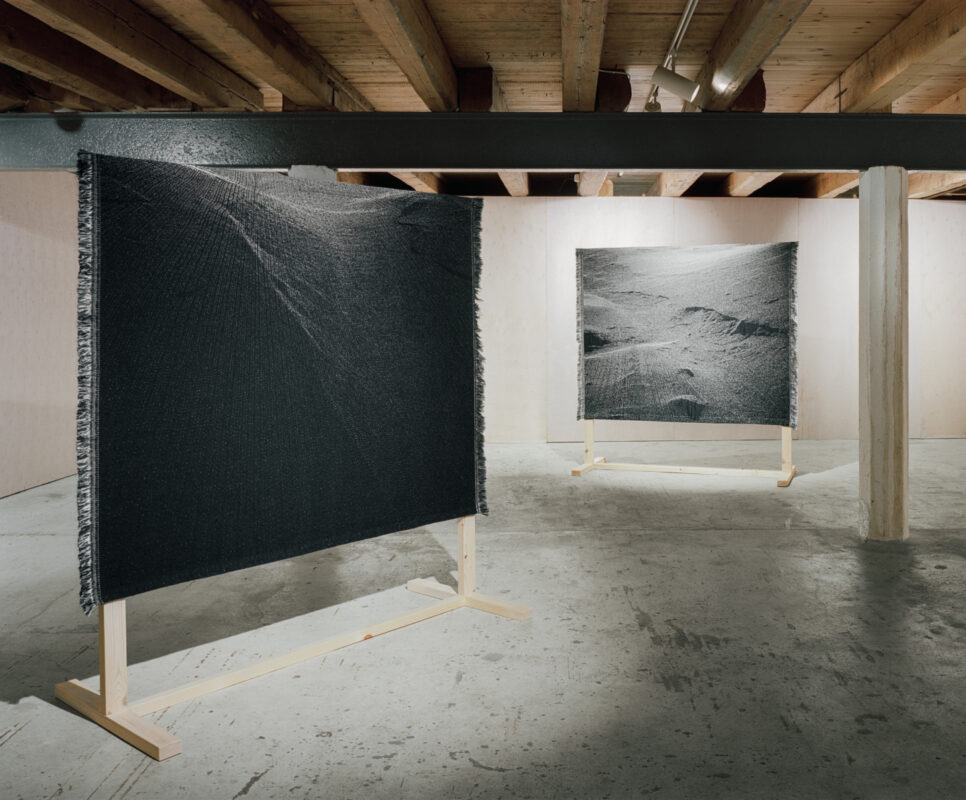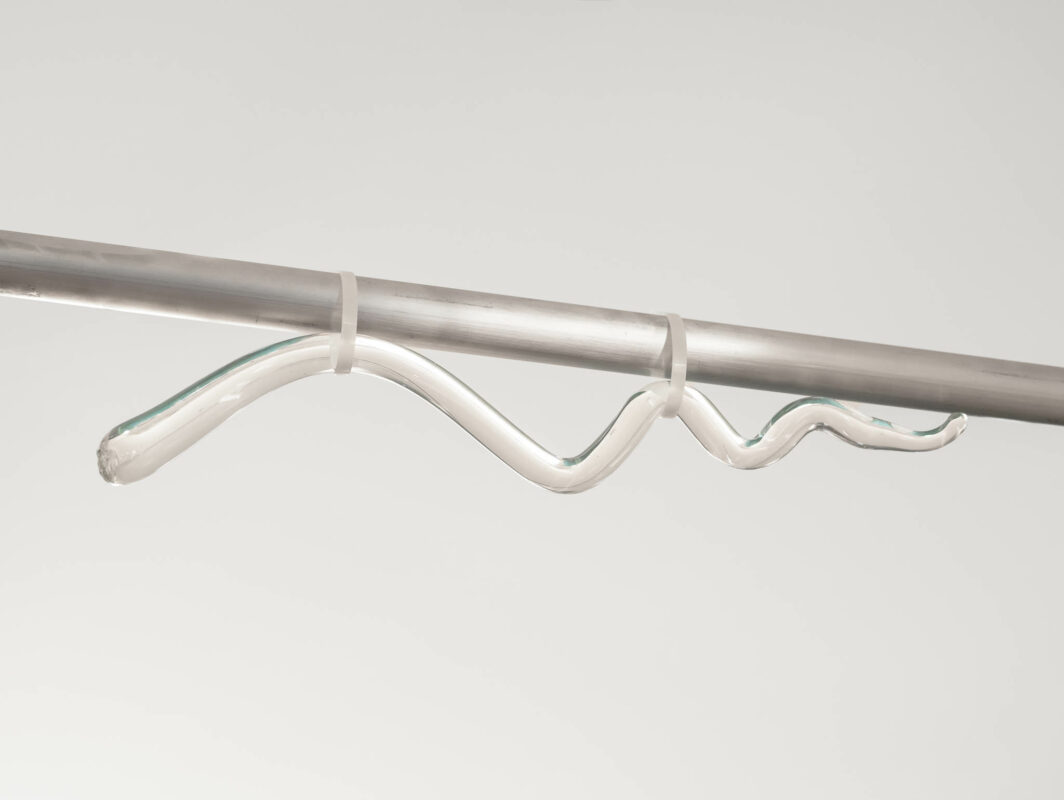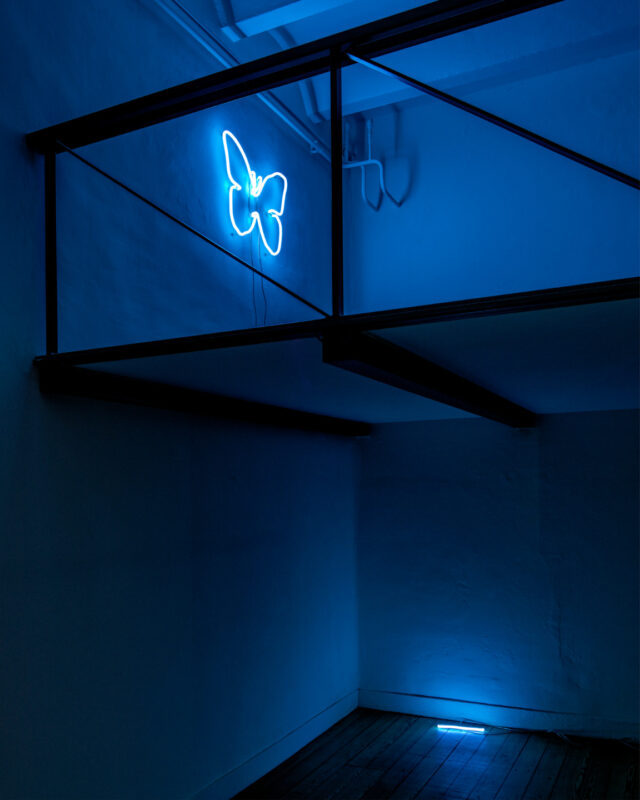What is your expression?
I work in the borderlands of the performative, digital and tactile by creating constellations of media such as video, sound, textiles, sculptural light or glass works and vocal performance.
What inspires you?
Conversations with friends and colleagues. But also certain places.
I also find inspiration in the words of Herta Müller, the films of Alice Rohrwacher, and the sculptures of Laura Lamiel. It might have to do with a kind of childlike wonder, how the senses become more receptive when we encounter unfamiliar places. The challenge is perhaps to reach that same heightened state of awareness in the places we know well, in our daily lives. I like to think that Müller, Rorhwacher and Lamiel are quite skilled at this, which may be why I feel so drawn to their work.
How would you describe your art?
Parallel to my visual practice, I work as a writer. My debut novel Nightblooming is set in a near-future society grappling with insomnia, one of the afflictions of a late capitalist society. It is an exploration of sleep through art, literature and architecture.
Similarly, my visual work tends to focus on themes such as sleeplessness, day and night rhythms, light, light pollution, the built environment, the intersection of the biological and the technological, and the artificial mimicry of phenomena found in nature. My work is often shaped by conversations with others, including biologists and people suffering from insomnia.
After a series of residencies in the scientific research village of Ny-Ålesund in Svalbard, I made the textile and sound installation Hymnosphere, comprising three woven tapestries based on laser reflectance depictions of the surrounding landscape, made together with a snow and avalanche researcher. Due to climate warming, Svalbard is experiencing an increase in rain-induced avalanches. The images of the avalanche that occurred during my stay resemble nightscapes or extraterrestrial landscapes.
The work also includes a sound piece. Three voices can be heard humming, singing, and breathing, evoking associations with various animals. At times, there’s heavy breathing, reminiscent of the sound of deep sleep.
Another piece that explores mimicry of (animal) sounds through the human voice is Insect sing-along. This work portrays the life cycle of a butterfly: from caterpillar, to pupa, to its metamorphosis into the adult form. The butterfly’s final transformation is into a robotic insect developed at the Technical University in Delft. These prototypes could, in the future, potentially assist in pollination as insect populations decline.
At sunset during the exhibition’s opening, I presented a vocal performance developed in collaboration with a local choir. During regular opening hours, the silent film was accompanied by a sound piece recorded with voice artist Miyuki Inoue. The installation also included a series of neon light works, referencing nocturnal insects’ fascination with artificial sources of light.
Why did you end up living where you are?
I grew up on a cargo ship that travelled along the rivers of Europe. The barge, owned by my parents, was a small family business passed down through several generations. It was a tough life, involving heavy manual labour. These kinds of businesses are increasingly being taken over by large shipping companies.
I broke with family tradition to study literature and fine arts in Iceland, Belgium, and the Netherlands. After graduating in Reykjavík in 2016, I moved to Stavanger, where I lived for several years before settling in Bergen about two years ago.
What do you like about the artscene and the town?
I experienced Bergen as a very welcoming city for newly arrived artists. Initially, I was a bit nervous, I hadn’t studied here, and I was worried it might be difficult to connect with people. But the opposite turned out to be true.
I appreciate the collaborative spirit between different fields and institutions and the willingness to support one another. It may have something to do with the scale of the city, which seems to encourage openness.
What could be better in the local artscene?
I haven’t lived in Bergen that long, so I might still be seeing it through rose-tinted glasses. : )
What are you currently working on?
Although they stand on their own, my writing and visual practices inform each other. I’m currently close to finishing my second novel, which departs from my stay in the research village in Svalbard. One of the main characters is a house that is slowly sinking due to thawing permafrost.
I’m also working on a project centered around the day and night rhythm of orchids in greenhouses and windowsills, and the global trade of flowers. First experiments will be shown at Pier2 Art Center in Taiwan this winter, and then at Hordaland Kunstsenter in the spring of 2026.
What are your ambitions and plans for the future?
To stay alive and relatively happy.
Who of your colleagues deserves more attention?
There are many artists I would like to name here, so many who don’t receive enough recognition, but I will mention Annika Sellik. It’s difficult to put words to someone else’s practice, but I’m drawn to the strength in the simplicity that I feel is part of her work.
(Portrait: Anna Perger. Documentation: Hugo Lütcherath, Ananda Serné, Erik Sæter Jørgensen and Gert Jan van Rooij)






